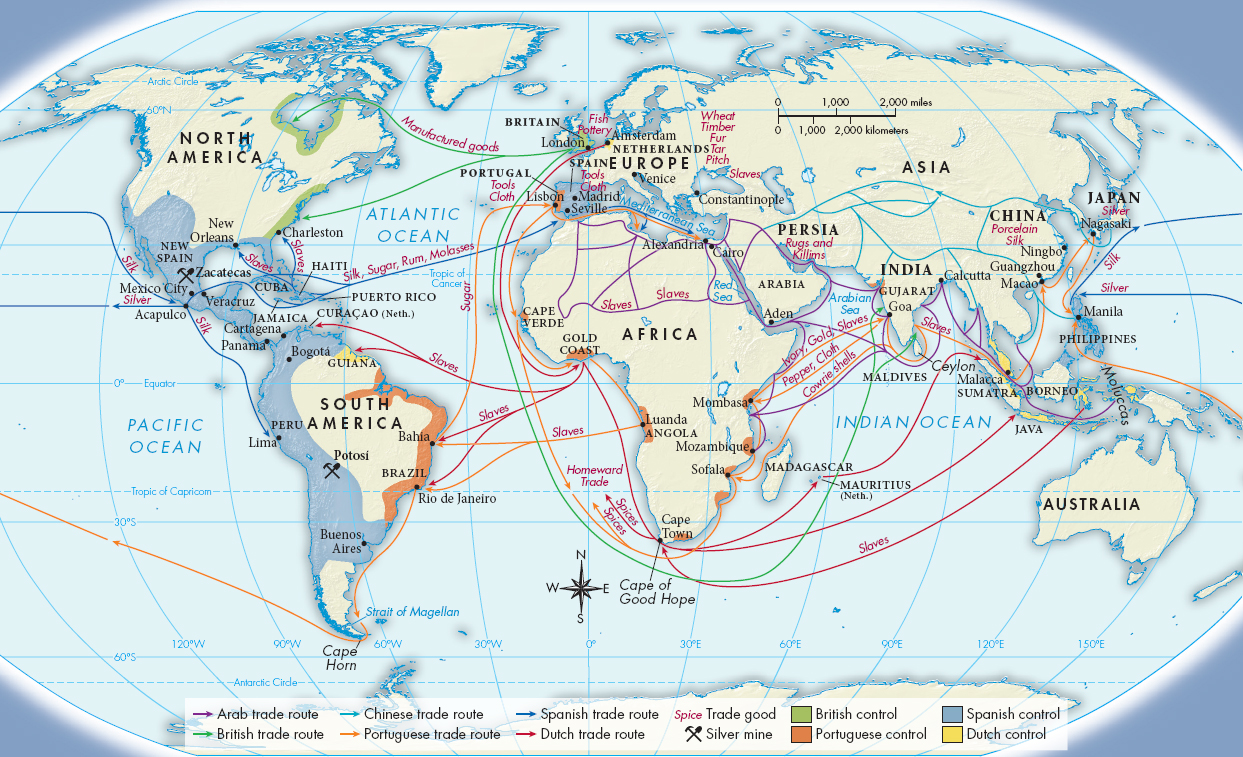Sugar and Slavery
Throughout the Middle Ages, slavery was deeply entrenched in the Mediterranean, but it was not based on race; many slaves were white. How, then, did black African slavery enter the European picture and take root in the Americas? In 1453, the Ottoman capture of Constantinople halted the flow of white slaves from the eastern Mediterranean to western Europe. The successes of the Iberian reconquista also meant that the supply of Muslim captives had drastically diminished. Cut off from its traditional sources of slaves, Mediterranean Europe then turned to sub-

In this stage of European expansion, the history of slavery became intertwined with the history of sugar. Originally sugar was an expensive luxury that only the very affluent could afford, but population increases and monetary expansion in the fifteenth century led to increasing demand. Native to the South Pacific, sugar was taken in ancient times to India. From there, sugar crops traveled to China and the Mediterranean. When Genoese and other Italians colonized the Canary Islands and the Portuguese settled on the Madeira Islands, sugar plantations came to the Atlantic.

Sugar was a particularly difficult and demanding crop to produce for profit. The demands of sugar production only increased with the invention of roller mills to crush the cane more efficiently. Yields could be augmented, but only if a sufficient labor force was found to work the mills. Europeans solved the labor problem by forcing first native islanders and then enslaved Africans to provide the backbreaking work.
Sugar gave New World slavery its distinctive characteristics. Columbus himself brought the first sugar plants to the New World. The transatlantic slave trade began in 1518 when the Spanish emperor Charles V authorized traders to bring enslaved Africans to the Americas. The Portuguese brought slaves to Brazil around 1550; by 1600, four thousand were being imported annually. After its founding in 1621, the Dutch West India Company transported thousands of Africans to Brazil and the Caribbean, mostly to work on sugar plantations. In the mid-
Conditions for enslaved Africans on the Atlantic passage were often lethal. Before 1700, when slavers decided it was better business to improve conditions, some 20 percent of slaves died on the voyage.8 To increase profits, slave traders packed several hundred captives on each ship. On sugar plantations, death rates from the brutal pace of labor were extremely high, leading to a constant stream of new shipments of slaves from Africa.
In total, scholars estimate that European traders shipped over 10 million enslaved Africans across the Atlantic from 1518 to 1800 (of whom roughly 8.5 million disembarked), with the peak of the trade occurring in the eighteenth century.9 By comparison, only 2 to 2.5 million Europeans migrated to the New World during the same period.